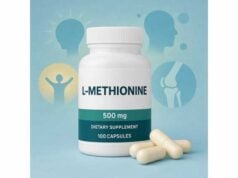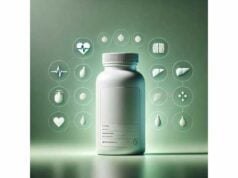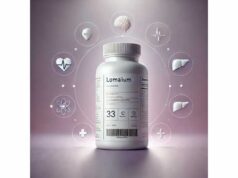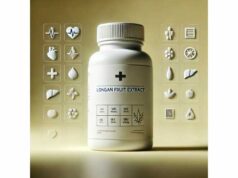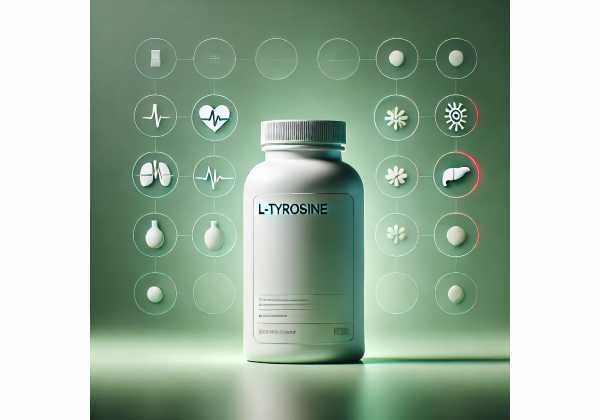
L-tyrosine is a conditionally essential amino acid that your body uses to build catecholamine neurotransmitters—dopamine, norepinephrine, and epinephrine—as well as thyroid hormones and skin pigments (melanin). Because stress, sleep loss, heat, cold, and heavy cognitive load can temporarily drain catecholamine signaling, tyrosine has been studied as a short-term “resilience nutrient.” In practical terms, the right dose taken at the right time may help maintain mental performance when you are under exceptional demand, while doing little in low-stress conditions. This guide translates the science into clear actions: what L-tyrosine is, where it helps (and doesn’t), how to use it without common mistakes, who should avoid it, and how it compares with adjacent options. You’ll also find evidence snapshots from human trials, plus a dosage framework that respects safety and individual variability. Use it to decide—ideally with your clinician—whether L-tyrosine belongs in your toolkit for shift work, intense study, travel, or high-stakes tasks.
Key Insights
- Helps maintain working memory, vigilance, and reaction time under stress (sleep loss, cold, heat, high cognitive load).
- Typical acute range: 100–150 mg/kg once before demand; practical consumer range: 500–2,000 mg per dose.
- Avoid if you use levodopa (L-DOPA) or have uncontrolled hyperthyroidism; speak to your clinician if on thyroid medicine.
- Not a general “focus booster” in rested, low-stress situations; effects are context-dependent.
Table of Contents
- What is L-tyrosine?
- Does it work? Evidence-based benefits
- How to take it: forms, timing, and dosage
- Real-world use cases and smart stacks
- Common mistakes and troubleshooting
- Side effects, interactions, and who should avoid it
- Research at a glance: what trials show
What is L-tyrosine?
L-tyrosine (often shortened to “tyrosine”) is an amino acid your body can make from phenylalanine. Under illness, chronic stress, or restricted diets, endogenous production may not keep pace with demand—hence it’s considered “conditionally essential.” Beyond its role in building proteins, tyrosine feeds several high-impact pathways:
- Catecholamine synthesis. Tyrosine is converted by tyrosine hydroxylase to L-DOPA, then to dopamine, and onward to norepinephrine and epinephrine. These neurotransmitters control alertness, motivation, working memory, and the body’s fight-or-flight response. When stress or sleep loss pushes the system hard, presynaptic stores can be challenged. Providing more substrate (tyrosine) may help maintain output for a limited window.
- Thyroid hormones. Tyrosine combines with iodine to form thyroxine (T4) and triiodothyronine (T3). This link is why people with thyroid disease or on thyroid medication should approach supplements with medical guidance.
- Melanin. Tyrosine is the starting material for melanin, the pigment that helps protect skin and eyes from ultraviolet light. This biochemical role has little direct bearing on cognitive effects but explains why tyrosine sometimes appears in topical formulas.
How tyrosine differs from stimulants. Caffeine and prescription stimulants acutely ramp arousal. Tyrosine instead supports the natural synthesis of catecholamines, which may preserve performance during strain rather than push it beyond baseline. That distinction explains why tyrosine usually shows context-dependent benefits: it helps when you’re stressed or depleted, not necessarily when you’re rested.
Food sources and absorption. Poultry, fish, dairy, soy, and legumes provide tyrosine. As a supplement, the free form is rapidly absorbed. Like other large neutral amino acids (LNAAs), tyrosine uses shared transporters; heavy protein meals increase competition for gut and blood-brain transport, which can blunt acute cognitive effects. A lighter pre-dose meal often works better.
Who considers tyrosine? Shift workers, students during exam weeks, clinicians on call, military personnel, first responders, and travelers facing red-eye flights—anyone anticipating temporary, high-demand periods where maintaining accuracy and reaction time matters.
Does it work? Evidence-based benefits
Bottom line: Tyrosine helps most when stress is high and transient; benefits are small-to-moderate and task-specific. In rested, low-stress settings, effects tend to fade.
Working memory and vigilance under sleep loss. In randomized work-shift and sustained-wakefulness studies, single doses of tyrosine preserved psychomotor vigilance and reduced lapses for a few hours when participants were awake >24 hours. Improvements are typically time-limited (≈3 hours) and most visible on tasks that stress attention and short-term memory. This makes tyrosine a candidate for bridging brief, unavoidable sleep debt—not a replacement for sleep.
Cognition under environmental stress (cold or heat). Cold exposure reliably impairs memory and slows reaction time; tyrosine has mitigated these decrements in controlled trials. In heat-stress exercise protocols, findings are mixed: some studies show better vigilance and reaction time, others show no meaningful change in cognition or performance. The takeaway is nuanced: environmental stress can create the “depletion” state where tyrosine helps, but not all heat protocols deplete catecholamines enough to reveal an effect.
High cognitive load and multitasking. In laboratory settings that tax information updating (e.g., N-back) or multitasking, acute tyrosine has maintained accuracy or reduced performance decline, with the strongest signals in tasks that depend on fronto-striatal dopamine. Effects are not universal across all executive functions.
Mood and motivation. Tyrosine is not an antidepressant. Still, during acute stress, some people notice steadier motivation and less “mental fatigue,” likely reflecting supported catecholamine synthesis. In ordinary daily life, mood effects are subtle to none.
Who benefits most?
- Individuals facing predictable, short-term stress (night shifts, exams, simulations, time-zone jumps).
- People sensitive to sleep-loss-related lapses (e.g., operators who must monitor screens).
- Those who tolerate caffeine poorly yet need a performance safeguard under strain.
What not to expect. Tyrosine will not convert chronic sleep restriction into peak performance, fix attention disorders, or improve complex strategic thinking beyond what intact sleep, training, and pacing allow. It is not a cure for low motivation from burnout or mood disorders.
Effect size realism. Expect modest, task-bound benefits. On good days with low stress, you may feel nothing—this is normal and reflects the mechanism (depletion reversal, not stimulation).
How to take it: forms, timing, and dosage
Forms. Most studies use free-form L-tyrosine powder or capsules. N-acetyl-L-tyrosine (NALT) appears on some labels but converts to tyrosine inefficiently; for acute cognitive aims, plain L-tyrosine is preferred.
Evidence-anchored doses.
- Acute, high-demand events: 100–150 mg/kg once, taken 30–60 minutes before the stressful workload (e.g., a demanding night shift, intensive simulation, or exposure to cold). This research style dose is common in military and shift-work trials.
- Pragmatic consumer dosing: 500–2,000 mg per dose, taken 30–60 minutes before the expected stressor. For smaller bodies or mild stress, start at 500–1,000 mg.
- Split dosing for long windows: If the stress window exceeds 3–4 hours, some use two smaller doses (e.g., 750–1,000 mg pre-task, then the same dose 3–4 hours later). Avoid late-evening redosing if you are sensitive to alertness at bedtime.
Timing with food. To favor absorption and brain uptake:
- Take on a relatively empty stomach or with a light, lower-protein snack.
- Avoid heavy protein meals immediately around dosing; LNAAs compete for transport.
- Hydrate; mild dehydration can worsen fatigue during heat stress.
Pairings (optional).
- Caffeine (low to moderate): If you tolerate caffeine, pairing a small dose (e.g., 50–100 mg) with tyrosine can cover both arousal and substrate supply. Start conservatively to avoid jitters.
- Electrolytes and water: In heat, combine with sound hydration.
- Light exposure and breaks: During overnight work, bright light and strategic micro-breaks complement tyrosine better than escalating doses.
How long to trial it. Tyrosine is an acute-use tool. You can evaluate its usefulness over 2–4 high-demand sessions, then adjust dose or retire it if you do not notice task-relevant benefits. Routine daily use outside stress windows rarely adds value.
Storage and quality. Choose brands that publish batch-specific certificates of analysis (identity, purity, microbial limits, heavy metals). Free-flowing, slightly bitter white powder is typical; store dry and away from heat.
Real-world use cases and smart stacks
1) Night shift or on-call duty.
Use 1,000–2,000 mg 30–60 minutes before the most demanding portion of the shift (e.g., midnight to 04:00). Add bright light exposure early in the shift, limit heavy meals, and schedule short, brisk walks to refresh alertness. If needed, a second 500–1,000 mg dose 3–4 hours later may extend vigilance—but stop dosing at least 6 hours before planned sleep.
2) Exam days or high-stakes presentations.
If nerves and cognitive load are your issue (not sleep deprivation), test 500–1,000 mg on a practice day first. Pair with a familiar, small caffeine amount if you tolerate it; avoid experimenting on the actual exam day. Keep breakfast light with low protein to reduce LNAA competition.
3) Long-haul flights and jet lag.
When mental clarity is needed after overnight travel, consider 1,000–1,500 mg 60 minutes before landing or just after. Combine with hydration and light exposure at destination. Do not redose close to your planned bedtime.
4) Cold-weather operations.
For outdoor workers or winter athletes facing intense cold, a single 100–150 mg/kg dose has mitigated cold-induced working memory declines in trials. Practical alternative: 1,500–2,000 mg 30–60 minutes pre-exposure, with layered clothing and warm fluids.
5) Heat-stress tasks.
Evidence is mixed. If you still wish to try, keep expectations modest. Hydration, electrolyte balance, and heat acclimation remain primary.
6) Low-caffeine strategy.
If caffeine disrupts your sleep or causes jitters, tyrosine can be a gentler fallback during short stress bouts. Start at 500–1,000 mg, and double only if a prior trial under similar conditions showed benefit.
Smart stack ideas (keep it simple):
- Tyrosine + water/electrolytes + light (overnight work).
- Tyrosine + small caffeine + breaks (exam or presentation).
- Tyrosine + warm clothing + planned warming cycles (cold exposure).
Avoid stacking with many “focus” ingredients; overlapping effects can complicate side-effect tracking and do not guarantee better performance.
Who tends to feel it most? People who are sleep-restricted, confronting high-throughput tasks (monitoring, target detection, rapid decision-making), or in environments that tax thermoregulation.
Common mistakes and troubleshooting
Mistake 1: Expecting a stimulant buzz.
Tyrosine is not a classic stimulant. You are more likely to notice fewer lapses, steadier accuracy, or quicker recovery from brief dips—not euphoria or dramatic energy.
Mistake 2: Taking it with a large protein meal.
Competition from other LNAAs can blunt brain uptake. Fix: Dose on a relatively empty stomach or with a light, lower-protein snack.
Mistake 3: Using it daily without a reason.
Benefits are contextual. Chronic daily use when life is calm wastes capsules and obscures whether it works when you truly need it.
Mistake 4: Overdosing before bed.
Late-evening or night-shift redosing can interfere with sleep on your next day off. Fix: Stop dosing at least 6 hours before intended bedtime and use light/caffeine timing instead of extra tyrosine.
Mistake 5: Ignoring hydration and environment.
In heat or cold, tyrosine is adjunctive. If you are dehydrated or poorly insulated, performance will still suffer. Address fundamentals first.
Troubleshooting quick answers
- No effect at 1,000 mg? Try 1,500–2,000 mg on a similar stress day or move dose 30 minutes earlier.
- Queasy stomach? Take with a small, lower-protein snack and plenty of water.
- Jitters or elevated heart rate? Reduce dose and avoid pairing with caffeine.
- Headache? Hydrate; if persistent, lower the dose or discontinue.
- Interferes with sleep? Shift dosing earlier; avoid any redose after mid-shift; emphasize bright light during the shift and darkness afterward.
Side effects, interactions, and who should avoid it
Typical side effects (dose-related):
- Nausea or stomach discomfort (often resolves with food and hydration).
- Mild restlessness or headache in sensitive users at higher doses.
- Sleep disruption if taken too close to bedtime.
Less common considerations:
- Blood pressure: Acute catecholamine support may transiently raise blood pressure in some people under stress. Monitor if you have hypertension.
- Thyroid: Tyrosine is a substrate for thyroid hormone synthesis. If you have hyperthyroidism or take levothyroxine, use only with clinician guidance and avoid large, frequent doses.
Medication and condition cautions:
- Levodopa (L-DOPA): Tyrosine competes for absorption and transport; it can reduce levodopa’s effect. Do not co-dose; this combination requires prescriber oversight.
- MAO inhibitors: Although the classic hypertensive risk involves tyramine, anyone on MAOIs should consult their prescriber before amino acid supplements.
- Stimulant medications: Combining with amphetamine-like drugs can feel too activating; proceed cautiously, if at all, with medical input.
- Thyroid disease: Uncontrolled hyperthyroidism is a contraindication; hypothyroid patients on replacement should discuss timing and dose with their clinician.
- Phenylketonuria (PKU): Tyrosine is often used therapeutically in PKU protocols, but dosing must be individualized under specialist care—do not self-supplement.
Pregnancy and breastfeeding. Data are limited. Because tyrosine influences catecholamines and thyroid pathways, pregnant or lactating individuals should avoid supplements unless specifically recommended by their clinician.
Allergies and intolerances. Tyrosine supplements are typically free of common allergens, but check excipients if you are sensitive to gelatin, silicon dioxide, or capsule dyes.
Quality checklist for safer use:
- Choose L-tyrosine (free form) with batch-specific third-party testing (identity, purity, heavy metals, microbes).
- Favor clear labeling with per-capsule milligrams to allow precise titration.
- Avoid proprietary “focus blends” that obscure tyrosine quantity or bundle multiple stimulants.
- Store cool and dry; moisture can degrade powder flow and capsule integrity.
Stop and seek medical advice if you experience chest pain, severe headache, marked anxiety, palpitations, or any neurological symptoms after dosing—especially if combined with other stimulating agents.
Research at a glance: what trials show
Study settings that show benefits
- Sustained wakefulness: In a double-blind, randomized design, tyrosine (≈150 mg/kg) reduced lapses and maintained psychomotor performance for ≈3 hours after one night without sleep.
- Cold stress: Controlled cold-exposure trials using 150–300 mg/kg in divided doses improved match-to-sample working memory and reaction time versus placebo.
- Cognitive load: Acute tyrosine has supported updating (N-back) and certain aspects of inhibitory control in healthy adults, especially when tasks likely taxed dopaminergic fronto-striatal circuits.
Study settings with mixed or minimal benefit
- Heat stress with exercise: Some protocols reported improved vigilance or reaction time; others found no meaningful cognitive or physical performance gains despite elevated serum tyrosine.
- Rested, low-stress conditions: Effects are often absent—consistent with the idea that tyrosine mainly reverses transient depletion rather than enhances beyond baseline.
Dosing patterns from the literature
- Acute single dose: 100–150 mg/kg 30–60 minutes before the stressor.
- Operational protocols: Sometimes use split dosing to cover multi-hour windows (e.g., two equal doses several hours apart).
- Consumer translation: 500–2,000 mg per use, titrated to body size, sensitivity, and demand level.
Safety signals
- Across controlled trials in healthy adults, acute tyrosine is generally well tolerated. The most common complaints are GI upset and transient restlessness, especially at higher doses or with caffeine.
- A 2023 safety review summarizing human dose-response work on amino acids supports establishing human upper-intake frameworks; while tyrosine-specific ULs are still evolving, the broader literature emphasizes using the lowest effective dose, avoiding chronic high intakes without clinical need, and respecting drug interactions.
How to read the evidence
- Tyrosine’s advantage is situational. The best predictors of benefit are acute catecholamine demand (sleep loss, cold, complex rapid-response tasks) and task type (vigilance, working memory, response inhibition).
- Null findings are informative: if your stressor or task does not heavily tax catecholamines, tyrosine may do little. Design your personal trial accordingly.
References
- Effect of tyrosine supplementation on clinical and healthy populations under stress or cognitive demands–A review (2015) (Systematic Review)
- The effects of tyrosine on cognitive performance during extended wakefulness (1995) (RCT)
- Tyrosine supplementation mitigates working memory decrements during cold exposure (2007) (RCT)
- Neuro-Cognitive Effects of Acute Tyrosine Administration on Reactive and Proactive Response Inhibition in Healthy Older Adults (2018)
- Tolerable Upper Intake Level for Individual Amino Acids in Humans: A Narrative Review of Recent Clinical Studies (2023) (Review)
Medical Disclaimer
This article is for educational purposes and does not replace personalized medical advice. L-tyrosine can interact with medications (notably levodopa and stimulant drugs) and may not be appropriate with certain thyroid conditions. Always consult a qualified healthcare professional before starting, combining, or stopping any supplement, changing dosages, or using supplements around safety-critical tasks.
If this guide helped you, please consider sharing it on Facebook, X (formerly Twitter), or any platform you prefer, and follow us for future evidence-based articles. Your support helps us continue producing high-quality resources.

